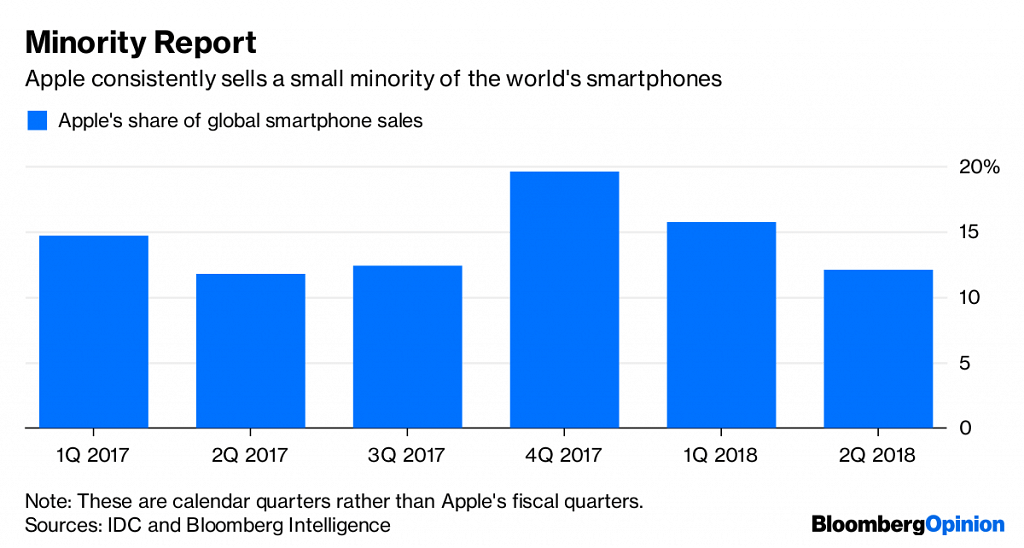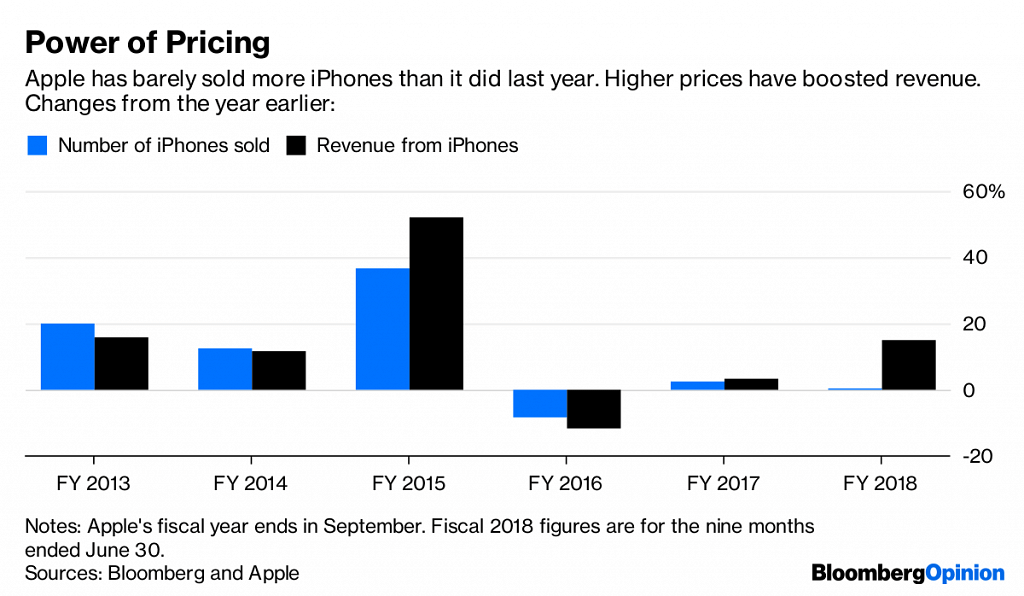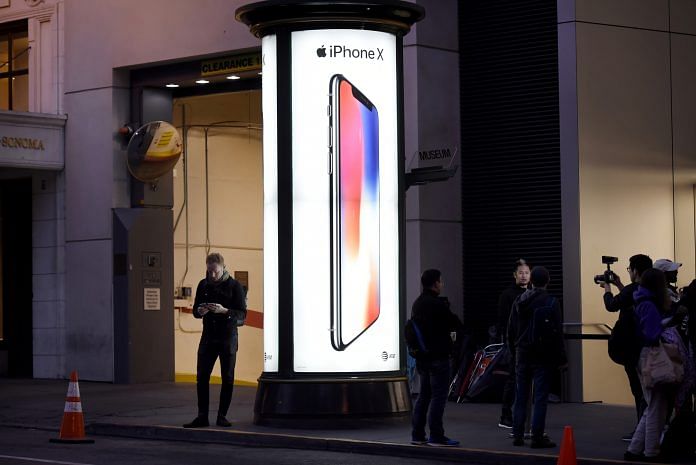Apple’s lower-end ranges have never made a lasting impression among consumers.
Apple Inc. proved one thing this year: It can charge whatever it wants for iPhones. Its growth rests on its ability to maintain that pricing power.

Mark Gurman and Debby Wu of Bloomberg News revealed more details of Apple’s planned makeover for its fall 2018 iPhone models. There will be an updated version of the 2017 iPhone X; a higher-end, larger-screen edition of the iPhone X, presumably with an even higher-end price; and an iPhone X-like model with some more basic parts that will serve as the entry level model in Apple’s 2018 lineup.
Like Apple’s 2017 iPhone editions, there will be three current year models but with even clearer product and pricing segmentation: good, better and best.
Here’s the thing, though: Apple has never done well selling the “good” phones in its lineup. That has hardly mattered because the more entry-level models effectively serve another duty: They push people to the more expensive versions that Apple increasingly relies on for its sales growth.

Apple’s ability to sell the most expensive smartphone in its lineup has been the biggest happy surprise in the company’s last year. The average iPhone sale price rose to $758 in the nine months ended 30 June compared with $661 at the same point in 2017. That is testament to demand for the $1,000-and-up Phone X, which Apple says has been the top-selling iPhone model since it went on sale. If its average iPhone sale price had stayed constant, Apple’s iPhone revenue would have increased just 0.4 per cent so far in this fiscal year. Instead it rose 15 per cent.
The flip side of the iPhone X’s prevalence is the forgettable other 2017 models, the iPhone 8 and its larger-screen sibling, the 8 Plus. Those were the good and better versions, and Apple barely mentions them now.
This fits with a pattern of Apple’s relatively low-end iPhones not setting the world on fire. Remember the iPhone SE released in 2016? Apple said at the time that some people wanted a relatively smaller smartphone when most phones were getting supersized. It could have been the iPhone for the masses, but the $399 iPhone SE has been relegated to a niche in Apple’s product lineup. The 2013 iPhone 5c was considered a budget alternative at $100 less than the $650 flagship model of the time. It is the Voldemort of iPhones. No one speaks of it.
Those phones most likely filled some holes in Apple’s smartphone lineup, but they weren’t blockbusters. And that’s fine. In each of those iPhone model years, the most essential version was the high-end one. It didn’t hurt that the iPhone 5S of 2013 seemed grand compared with the plastic-cased iPhone 5c. It was clear that many Apple loyalists eager for a new phone waited out the iPhone 8 models introduced in September 2017 until they could buy the iPhone X. The best looks even better if people compared it with the merely good.

Both for its original computer business and later with the iPhones, Apple’s approach has never been volume sales. Instead, Mac and iPhone have held minority shares of their markets, but their premium prices have given Apple the majority of profits in both computers and smartphones. Apple’s price-over-volume strategy has helped it become the most valuable public company in the world.
As Apple relies on making the premium iPhone even more premium, it shows how much times have changed for the company and the smartphone market overall. Smartphones are an essential tools for billions, but people don’t feel the need to replace them often, which has caused annual global sales to flatline or decline. The same phenomenon happened to the personal computer market, though smartphone sales are multiples larger. Apple isn’t immune to this trend.
Apple deserves credit for sensing the opportunity for a super-premium iPhone. Apple’s smartphone rival Samsung Electronics Co. didn’t have the same success with its $1,000-and-up Galaxy smartphones of 2017. Apple stock watchers are starting to worry, however, about Apple’s ability to keep growing if it can’t budge the number of iPhones sold. That means all eyes will be on the company’s sales of the larger-screen “best” 2018 iPhone model that will further test the limits of Apple’s pricing power. – Bloomberg






